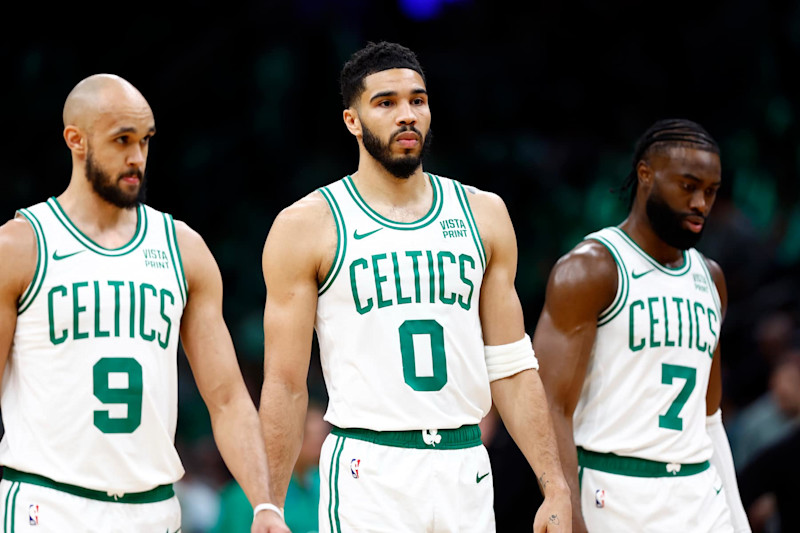
Danielle Parhizkaran/The Boston Globe via Getty Images
Oh, how the NBA’s Big Three landscape has changed.
This is not just a reference to their winnowing frequency—though, that is certainly part of it. The introduction of the second apron and the multitude of ways it penalizes lofty payrolls has rendered traditional three-star models more prohibitive than ever.
This inherently limits the pool from which we choose trios to rank. And while we should still have more than a handful of options, we are not basking in the afterglow of free agency anymore.
Reality is setting in for many. Games are being played—or, in many cases, not being played. This invariably foists a boatload of asterisks, caveats and notable exclusions upon us. And it creates an environment in which figuring out what qualifies as a Big Three is more than half the battle.
After that, it gets straightforward. We will rank trios by how well they are faring so far. Collective returns—i.e. net rating—will shape which triumvirates make the top five. Once we have them, though, we will be weighing individual performances from each member to create a more subjective hierarchy.
Any potential tiebreakers or close calls will be made by answering one question: Which troika would we rather have for the rest of this season?
Big 3 Criteria and Qualifications
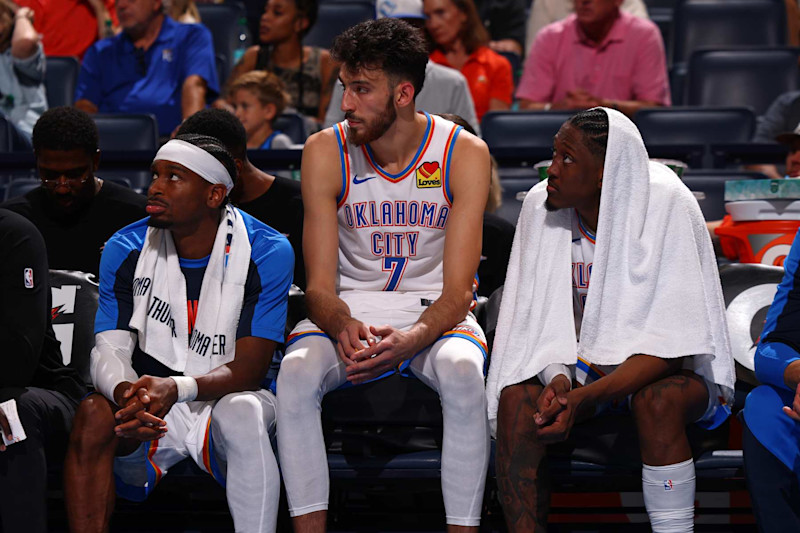
Zach Beeker/NBAE via Getty Images
In order to qualify for Big Three consideration, triplings must meet one of the following criteria:
- Big Threes must feature three All-Stars, none of whom have retreated into smaller post-prime roles.
- If you have two entrenched All-Stars, there must be a third player with a clear path to hitting that level this season.
- If you only have one entrenched All-Star, the remaining two players must both have the potential to hit that level this season and still be on their rookie scales. This stipulation is meant to give younger cores a chance while weeding out later-career assumptions (like two of Jamal Murray, Aaron Gordon and Michael Porter Jr. getting their first All-Star nods in 2024-25).
Trios must also have played at least 150 minutes together entering games on Thursday, Nov. 21. This threshold is somewhat arbitrary, but it gives us a sample of over 200 three-man combinations.
Yes, results during court time matter more than anything. Yet, if Big Threes haven’t been available enough to crack top-200 usage, it can and should eat into the overarching value they’ve delivered so far.
Finally, for certain teams, it can be hard to pin down the exact members of their Big Three, mostly because they’re built to dominate by committee or in the vein of Big Fours. In these cases, we will default to the squad’s best three players to this point, even if the prevailing consensus entering the season would have spotlighted a different name (or two).
Notable Exclusions
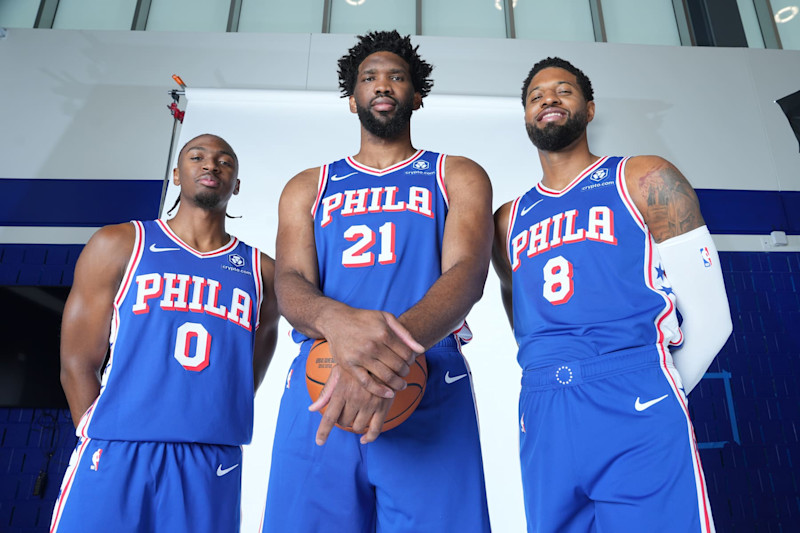
Jesse D. Garrabrant/NBAE via Getty Images
Dallas Mavericks: Luka Dončić, Kyrie Irving and Dereck Lively II/Klay Thompson
Let’s just get out in front of the inevitable “What about Dallas?!” inquiries from those determined to feel slighted. Neither Lively nor Thompson reasonably qualifies as a present-day finishing touch to a Big Three.
Memphis Grizzlies: Desmond Bane, Jaren Jackson Jr. and Ja Morant
Death, taxes and too many injuries in Memphis. Bane, Jackson and Morant have appeared in just two games together for a total of 18 minutes.
Miami Heat: Bam Adebayo, Jimmy Butler and Tyler Herro
Herro is playing well enough for this trio to have an argument. But the Heat are still getting absolutely trucked with all three on the court.
Milwaukee Bucks: Giannis Antetokounmpo, Damian Lillard and Khris Middleton
Middleton has yet to play this season as he recovers from dual-ankle surgery, so this is a no-go. Squeezing Brook Lopez in here helps Milwaukee’s overall case, but it stretches the boundaries of our criteria. And even if you think it doesn’t, their minutes together aren’t yet good enough to usurp what’s to come.
New Orleans Pelicans: Brandon Ingram, Dejounte Murray and Zion Williamson
Would this group have the juice to party crash the discussion? We’ll never know so long as injuries continuing ripping through every nook and cranny of the Pelicans roster.
Philadelphia 76ers: Joel Embiid, Paul George and Tyrese Maxey
This trio came close to topping our preseason rankings. But, uh, Big Threes must actually play together to be considered Big Threes. These guys have yet to see the floor at the same time. And at this rate, this might not happen before Thanksgiving—or maybe Christmas. (Also: Philly is a disaster.)
Phoenix Suns: Bradley Beal, Devin Booker and Kevin Durant
Excluding these three off-rip is difficult. But they have tallied just 149 minutes together, and, well, rules are rules.
5. Minnesota Timberwolves
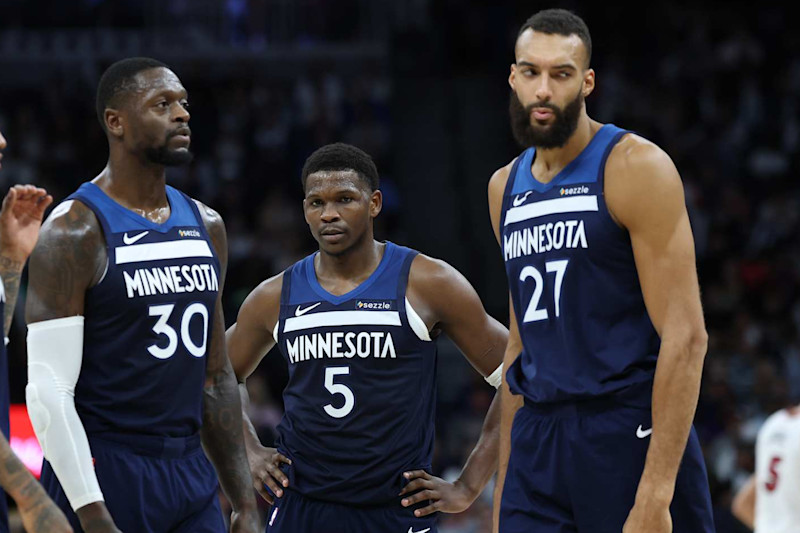
David Sherman/NBAE via Getty Images
The Big Three: Anthony Edwards, Rudy Gobert and Julius Randle
Minutes Played: 273
Net Rating: 8.9
It has not always looked pretty for the Minnesota Timberwolves’ Big Three. There is a real push and pull of awkwardness between Rudy Gobert and Julius Randle at both ends of the hardwood.
Minnesota is making it work anyway.
Anthony Edwards’ three-point volume is critical to the process. He has downed over 45.4 percent of his triples when playing beside Gobert and Randle, according to PBP Stats. The openings he carves out in tighter confines are indispensable–and a huge reason why Randle converts more than 55 percent of his twos during Big Three stints.
Better defensive returns are piling in for this trio to boot. The Timberwolves are up to the 71st percentile in points allowed per possession when all three are together, and head coach Chris Finch is getting better at deciding which levers to pull with the supporting cast around them. The crunch-time synergy and thermonuclear play from Randle and Edwards is currently off the charts.
Cutting down turnovers during their minutes would elevate this troika’s stock even higher. That’ll fall on Randle and Gobert more than Edwards. Still, as far as early returns go, these three are more tantalizing together than many initially thought following the Karl-Anthony Towns trade.
Honorable Mention: OG Anunoby, Jalen Brunson and Karl-Anthony Towns
4. Sacramento Kings
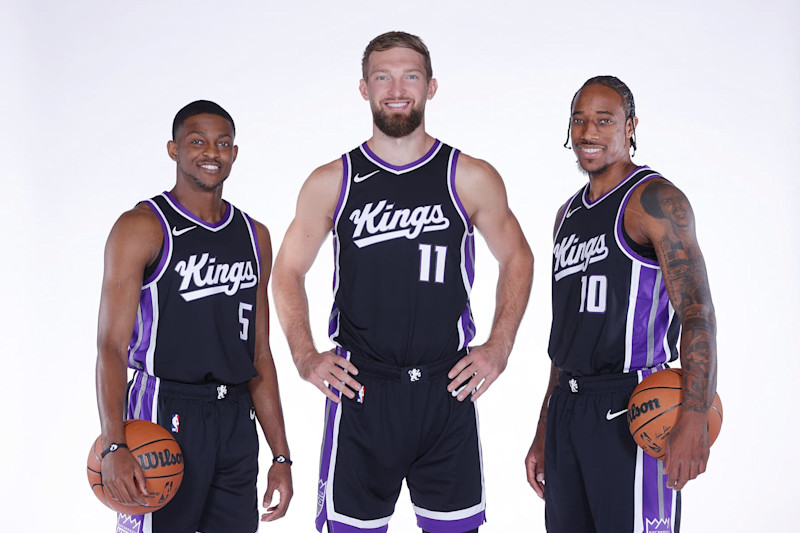
Rocky Widner/NBAE via Getty Images
The Big Three: DeMar DeRozan, De’Aaron Fox and Domantas Sabonis
Minutes Played: 259
Net Rating: 11.2
Remember when people were concerned about how the spacing would look for the Sacramento Kings’ offense with the Big Three on the court? Or how some wondered whether this could be the season that an age-35 DeMar DeRozan showed regression?
LOL.
Sacramento has a 121 offensive rating with DeRozan, De’Aaron Fox and Domantas Sabonis on the floor. What’s more, the defense has largely survived—without any real fluky opponent shooting. The Kings continue to do a good job of limiting looks at the rim with their core units, and as the Big Three’s sample expands alongside Keon Ellis and Keon Murray, that five-man unit may emerge as a cheat code.
Losing DeRozan to a back injury the past few games has unleashed Fox’s scoring to historical measures. But the shot-making from everyone translates to joint minutes.
Sabonis and Fox are both nailing over 67 percent of their twos during Big Three stretches while DeRozan checks in at a tidy 56.2 percent, per PBP Stats.
You would normally question the sustainability and even logic of a trio lighting it up on twos away from the rim. These Kings aren’t normal. That’s what makes this Big Three potentially special. What they’re doing together feels sustainable. And it includes Fox and DeRozan, respectively, leading the league in crunch-time makes.
3. Oklahoma City Thunder
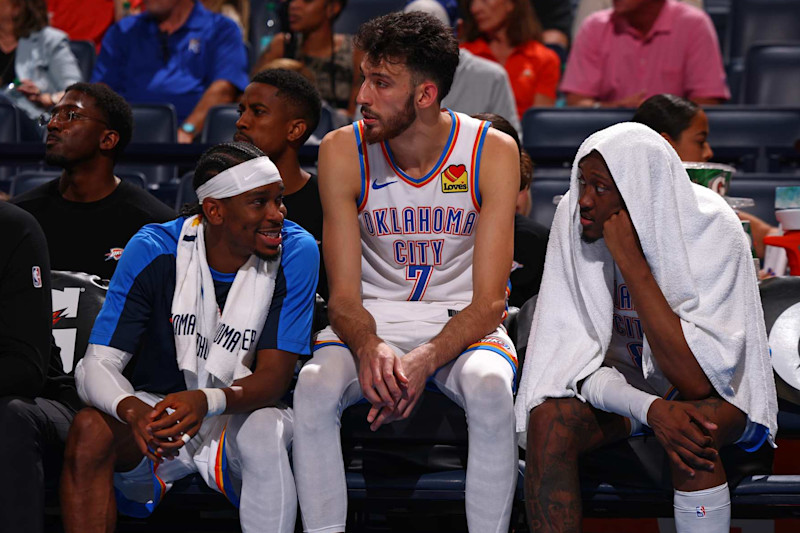
Zach Beeker/NBAE via Getty Images
The Big Three: Shai Gilgeous-Alexander, Chet Holmgren and Jalen Williams
Minutes Played: 156
Net Rating: 10.5
Enjoy the Oklahoma City Thunder Big Three’s eligibility while it lasts. Chet Holmgren’s hip injury will eventually deprive this trio of enough volume to appear in future editions.
We aren’t there yet, though.
A somewhat wonky start to the season for Jalen Williams could have derailed Oklahoma City’s seeming invincibility. Holmgren’s own defensive gall and deeper offensive armory ensured it never did.
J-Dub, of course, has since come around. He’s clearing 20 points and five assists on roughly 60 true shooting—benchmarks currently being hit by (mostly) a who’s who of All-NBA candidates. His production has featured another uptick in self-creation, particularly inside the arc, and a body of work at the other end that makes you wonder whether an entire All-Defense team can be populated by strictly Thunder players.
SGA’s performance requires zero vamping. He is tracking toward a third consecutive top-five MVP finish—and even more All-Defense consideration than he received last year.
2. Cleveland Cavaliers
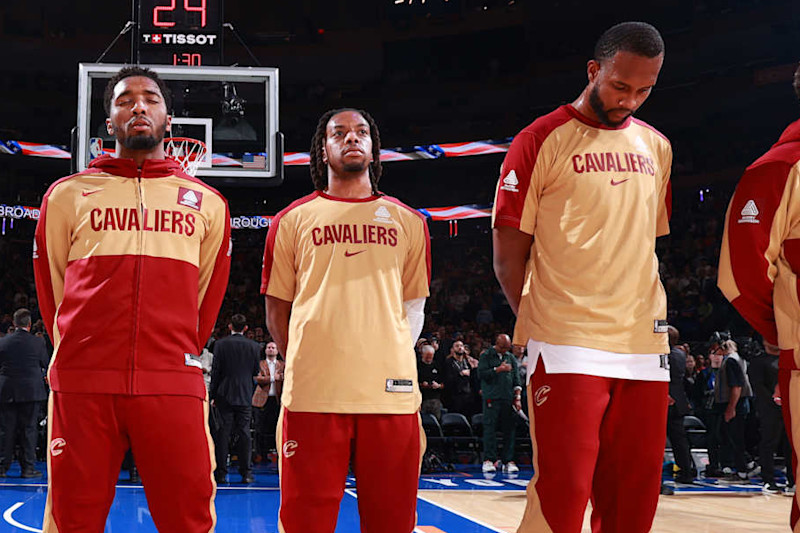
Nathaniel S. Butler/NBAE via Getty Images
The Big Three: Darius Garland, Donovan Mitchell and Evan Mobley
Minutes Played: 218
Net Rating: 4.4
Collective returns with Darius Garland, Donovan Mitchell and Evan Mobley on the court can be somewhat hazy relative to the Cleveland Cavaliers’ overall dominance. That’s only because some of their staggered combinations are just so damn good.
Slotting this trio any lower than No. 2 verges on impossible when looking at their individual performances.
Mitchell is averaging the quietest 24-plus points on better than 40 percent shooting from deep you’ll ever see. His ability to read the room and shape-shift his offensive role alongside Garland, in particular, is at an all-time high.
Mobley’s defensive transcendence remains intact, and he’s inching closer to All-Stardom on offense. Slightly extra three-point volume is going a long way, but his aggression and physicality when getting downhill is the bigger difference-maker.
Garland, meanwhile, is this team’s MVP. He’s averaging around 20 points and seven assists while banging in about 40 percent of his threes. His own downhill attacking is much improved—more variable, more efficient, more devastating. He also ranks third in crunch-time buckets, just in case you’re into that sort of thing.
1. Boston Celtics
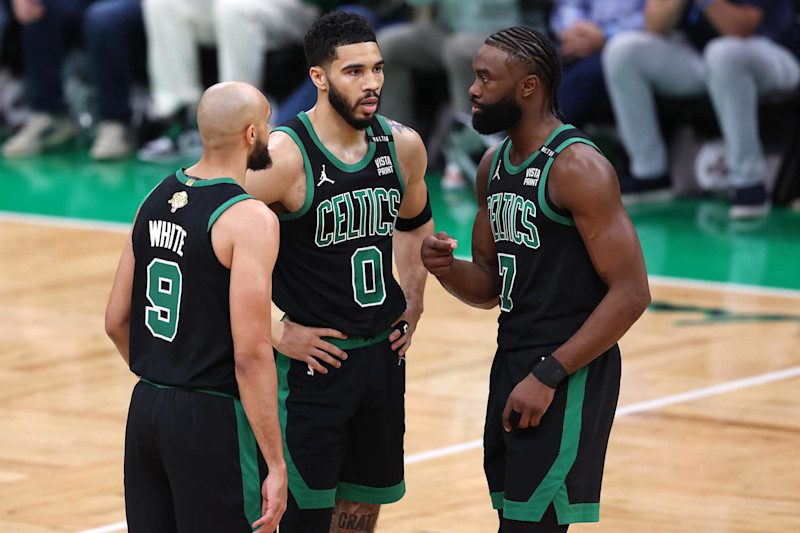
Adam Glanzman/Getty Images
The Big Three: Jaylen Brown, Jayson Tatum and Derrick White
Minutes Played: 248
Net Rating: 15.5
The only thing debatable about the Boston Celtics’ Big Three is the members who populate it.
Jayson Tatum and Jaylen Brown are non-negotiables. Kristaps Porziņģis’ injury makes the decision easier, turning this into a Jrue Holiday-or-Derrick White proposition.
If I’m being honest, the answer doesn’t really matter. Boston would claim the top spot anyway. But White has separated himself enough to get the decided nod.
Holiday will still handle tougher individual defensive assignments. White is more integral to the offense. His scoring and outside volume have ticked up yet again, and he’s no worse than Boston’s second-best passer.
Outstripping Cleveland’s Big Three is a tougher call than the net ratings indicate. But Tatum (passing, foul-drawing) and Brown (stronger, drawing way more fouls) have both leveled up areas of their own game—no small feat as entrenched All-NBA selections.
Do not be surprised if the Celtics wind up being the only team to have three All-Stars this season.
Dan Favale covers the NBA for Bleacher Report. Follow him on Twitter (@danfavale), and subscribe to the Hardwood Knocks podcast, co-hosted by Bleacher Report’s Grant Hughes.
Unless otherwise cited, stats courtesy of NBA.com, Basketball Reference, Stathead or Cleaning the Glass. Salary information via Spotrac. Draft-pick obligations via RealGM.
Leave a Reply